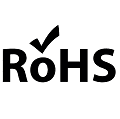Our explanations
CE and RoHS standards and our explanations:
The CE certificate and a marking directive which was validated in 1985 by the European Commission.
There are around twenty CE marking directives which cover each of the product categories, for example for toys, medical products, etc.
Consequently, each directive sets the essential requirements applicable to the products concerned. These technical requirements relate in particular to safety, health, the environment and consumer protection, etc..

When is it mandatory ?
The CE marking is only mandatory for products for which there are EU specifications and which require the affixing of the CE marking.
Some products are simultaneously subject to several EU requirements. First you need to make sure that your product meets all the necessary requirements before affixing the CE marking. Admittedly, it is prohibited to affix the CE marking to products for which there are no EU specifications or which do not require the affixing of the CE marking.
How to get it ?
It is the manufacturer’s responsibility to declare that the product complies with all the requirements, note that you do not need a license to affix the CE marking to your product.
Do you have to pay fees ?
It is the manufacturer who carries out the CE marking request for your products himself, as well as the conformity assessment, you will not have to bear any costs.
How to affix it ?
The CE marking must be visible, and also legible.
Put the CE mark on the product itself, otherwise you can put it on the packaging.

RoHS (Restriction of hazardous substances) aims to limit the use of hazardous substances in electronic equipment.
Targeted equipment
The directive targets products marketed in all European territories by distinct categories.
Especially:
1: large cold and non-cold household appliances
2: small household appliances
3: computer equipment and components
4: consumer equipment
5: lighting equipment
6: electric and electronic tools as well as batteries
7: toys, leisure and sports equipment
8: medical devices
9: control and monitoring instruments, as well as industrial control and monitoring instruments
10: vending machines
11: other EEE not falling into the above categories.
Labeling
However, the directive does not provide for a symbol identifying compliant devices. Although some manufacturers have introduced their own identification system, since July 1, 2006, all new products placed on the market are expected to be compliant. While from July 22, 2014, the CE marking incorporates RoHS: any CE marked electrical product must be RoHS.
Overall for CE and RoHS standards, it is the competent authorities of each State that must develop monitoring and control procedures.

